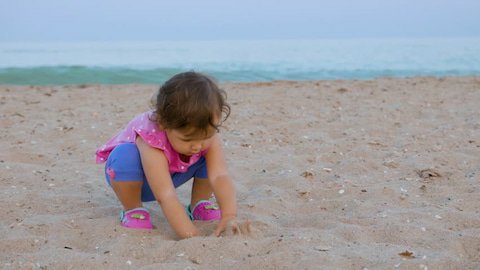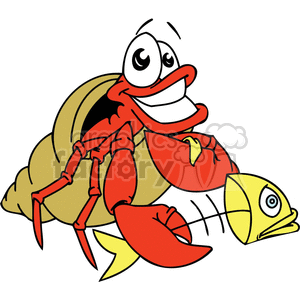Aradhana’s Pacific Adventures with Crustaceans

Like a lot of things these days, her interest in crustaceans coagulated into an actual project in the summer of 2020, right in the middle of Covid-19 Lockdown 2.0. She was holed up with her adventurous parents in one of the few tall buildings built right on a stretch of Pacific beaches, grandiosely called, Panama’s Gold Coast.
Her name is Aradhana and she is a prospective 7th grader at the International School of Panama. Her most prevalent learned behavior during these initial months of Covid-19 has been “Science Curiosity”, be it in Physics, Chemistry, Biology or Zoology. We were pleasantly surprised when she was recognized as ISP’s “Most Independent Thinking Student in Grade 6”.
After waking up with a smile each morning since the end of school, it dawned on her that perhaps she needed to test her newly discovered interests. And that made her look at everything with more focus and greater curiosity than before. We noticed that she could actually muster up sufficient courage to touch live creatures, whom she had only seen in books and dream of creating a shelter or even a habitat, where she could study their behaviors.

That brought her face to face with Hermit Crabs, her first Pacific crustaceans that she felt the need to befriend and understand, if at all possible. She wanted to observe, to study, to get familiar with them, till she could understand what their most pressing behavior traits really were.
So, she caught four (4) Hermit Crabs on the beaches of Playa Corona and named them: Herra (white, round shelled with 10 hairy legs), Hermes (brown-black, spiral-shelled with spots of white with 10 less hairy legs), Hermosa (tan & coffee colored spiral shell with 10 hairless legs, longer antenna and big red eyes) and finally Hercules, the smallest of the four, who looked like Hermes.
This quartet was introduced to their first home in a cardboard box with vertical cut-outs for windows, complete with lots of beach sand, separate bowls of fresh water and sea water and a potpourri of chopped lettuce and tomatoes. In addition, she created several human-made “hides” in the habitat, into which the Hermit crabs could disappear, if they wanted privacy.After an hour of investigation of all ‘ground floor’ facilities, all four Hermit crabs started showing-off their amazing vertical surface climbing proficiencies. Aradhana noticed that each had two (2) frontal “pinchers” which they used for eating, gripping when climbing, and protecting themselves from predators. These was followed by four (4) walking legs- two (2) on each side, and finally four (4) additional longer thinner legs that stayed mostly inside their shells and were only used when digging holes into the sand.
She got a first-hand demonstration of how effectively they could pinch to get away from predators, when Baby Hercules actually broke off a piece of her left hand thumbnail in less than a second!
Within an hour, this busy foursome, after feasting on the chopped tomato and lettuce repast, geared up for a visceral reaction to their captivity. They seemed to have decided they would break out and escape at any cost.
The next four hours saw five (5) increasingly intelligent and desperate attempts to get out of their makeshift prison. First, was a simultaneous attempt to climb up four different vertical walls, then edge onto the roofing (just cardboard flaps bent over) and slide down the other side of the outer walls. However, they were spotted by their pretty little jailor and returned to incarceration. The ill-designed roof was then “secured” by her with a remnant tile but she cut two (2) small windows on opposite walls to let the air in.
Several hours later, three (3) members of the group had burrowed sloping holes in the wet beach sand at different locations and were about to penetrate the soggy cardboard walls located there, when they were intercepted.
After these break-out attempts, I noticed Aradhana had become quite thoughtful about the whole matter of holding Hermit Crabs in captivity. Despite what Google had said about them being really friendly pets, she felt that her four (4) captives were really “born to be free” and to roam their own stretches of Pacific beaches, whenever they wanted. But she decided to “sleep on it” and leave her decision-making till the next morning.
Early next morning, I was awoken by her loud sobs. Broken-hearted, she informed me that “the whole lot” had climbed the walls and escaped through the smaller windows. Their habitat had been parked in a corner of the enclosed balcony, some distance from the tempered glass wall facing the ocean. Now, she couldn’t locate any of the Gang of Four on the balcony. So, over a mug of Darjeeling tea, I discussed options with her, before she wandered off. Suddenly, I noticed two (2) horizontal opening – each the size of a brick laying on its wide side, in the structure holding up the glass wall. They were drain openings to allow rain water to pour away from the balcony.
I grabbed my flipflops and face mask and took one of the elevators to the downstairs Social Area overlooking the cascading swimming pools. As I looked for clues I noticed the same two rectangular drain holes under a similar structure holding up a similar glass wall. Gingerly, I made my way there and looked down to the first pool area with a row of long lounge chairs. My eyes soon picked up pieces of Hermit crab shells and some intact insides.

I realized that these Pacific crustaceans had a DNA with a built-in propensity to escape from bondage at any cost. They did not realize that when they launched themselves from their 14th floor Freedom Gate, they were still several meters away from the beach and the waves they were born into.
Author: Samar Choudhuri
Freelance writer based in the Republic of Panama
Date: June 29, 2020